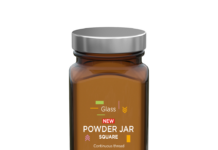Andrea Irazabal, sustainability manager at UPM Raflatac, discusses how Scottish brand owners can integrate sustainability into the packaging identity
MATERIAL evaluation is key for any producers wanting to make their primary and secondary packaging, including labelling, more sustainable. As part of this, it’s important to take into consideration different aspects such as recyclability, carbon footprint, availability and type of resources, to name a few.
To support circular economy, more producers are looking at ways to reduce raw material use in smart ways, to use renewable raw materials, to recycle materials in circulation and to reuse packaging.
An example of how one brand owner has used renewable raw materials to support their fossil-based plastic reduction targets is Lumene. This Finnish company is a beauty brand that takes its inspiration from Nordic nature and creates high-performing sustainable beauty products aimed at promoting a better future. In line with this, the company wanted to alter the packaging of its popular Nordic–C range. A new bio-attributed jar and label have been created that have the same visual appearance and technical properties of the previous fossil-based versions, whilst delivering a more sustainable solution.
Both the container and the label material are made with wood residue based UPM BioVerno naphtha. The Nordic-C label uses UPM Raflatac Forest Film, which is a polypropylene label material made with renewable raw materials that don’t compromise on the label’s performance and recyclability.
UPM Raflatac’s Forest Film products can reduce greenhouse gas emissions: a comparison with fossil-based film shows that the carbon footprint over the lifecycle can be reduced by as much as 20% . Being an integral part of the packaging, label materials play a role in strengthening its environmental performance by reducing carbon footprint and enabling recyclability while delivering the same convenience, functionality, and technical performance as fossil-based materials.
Protecting the ocean
Today, only around 10% of plastic waste gets recycled globally, while the rest ends up in landfills, incineration, or leaking into nature or the oceans . The world desperately needs more ways to reuse post-consumer plastic waste. Ocean bound plastic is plastic waste defined as ‘at risk of ending up in the ocean,’ and it is estimated to generate 80% of plastic marine litter.
To increase the sustainability of its packaging, Italian artisan fish product producer Zarotti, has switched to using UPM Raflatac’s Ocean Action label. The Ocean Action label is the world’s first label material made with ocean bound plastic through a mass balance approach. As a result of making this switch, Zarotti’s packaging now uses recycled content made from plastic waste that could otherwise end up in the oceans, while avoiding the use of virgin fossil raw materials.
And the added benefit is that with the Ocean Action label, it can continue to build brand loyalty with its customers, without affecting productivity.
Labels have the power to promote circularity in different ways: by enabling packaging recycling, reducing the use of fossil raw materials through using renewable materials. Thanks to innovative solutions such as the Ocean Action label and Forest Film, it is now becoming easier to integrate sustainability into a brand’s packaging identity, as demonstrated by Lumene and Zarotti.
















